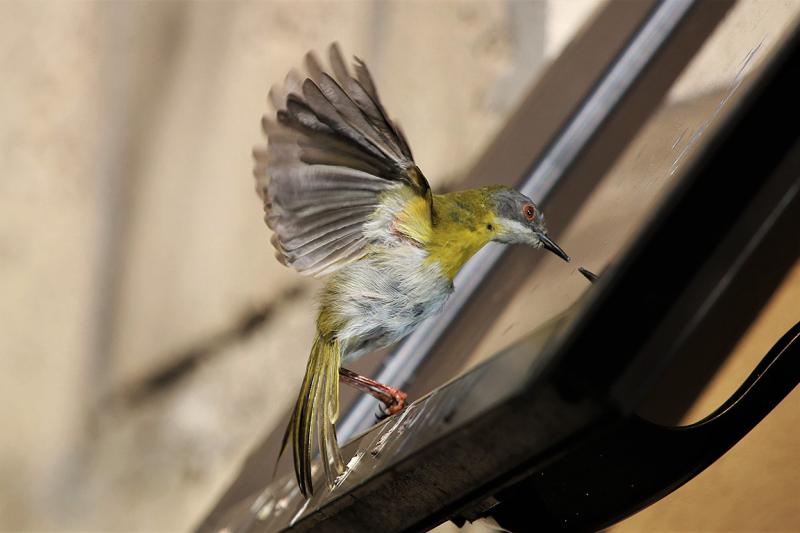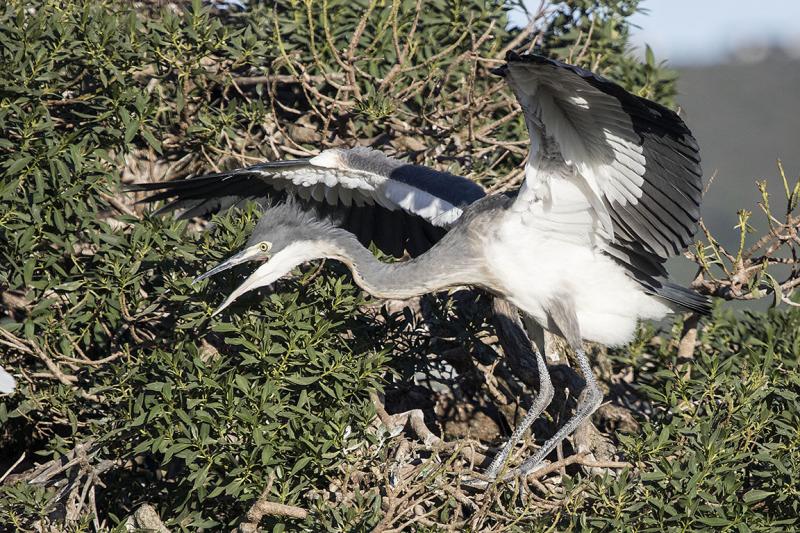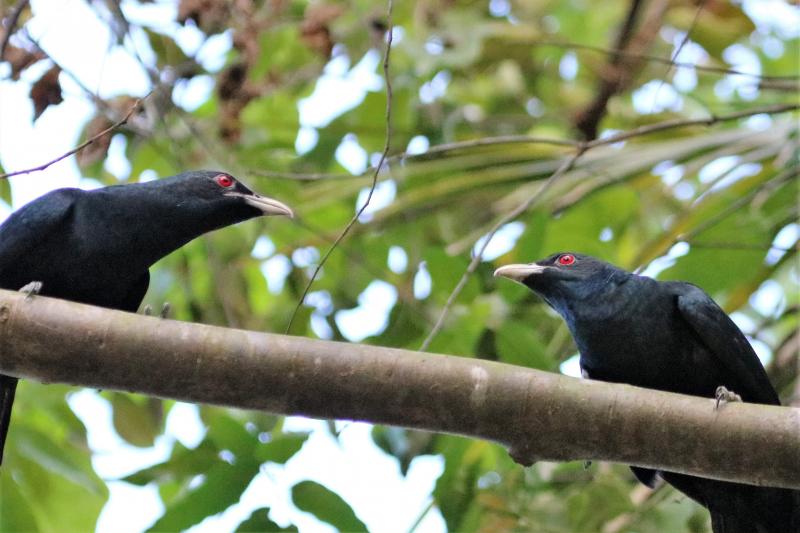2. Aggression and Defence
Deadly Weapons
Beaks can be a formidable weapon but like human beings the willingness to resort to violence varies from one avian species and one individual to another. Often it depends on circumstance. A bird defending its territory or chicks may attack intruders indiscriminately. Males of the same species may fight over breeding rights or territory or both.
Tough Birds
Species such the European robin, magpie and some members of the gull family are particularly belligent when it comes to territory and feeding rights. The Indian myna a highly invasive species now found across tropical Asia and into Africa and Australia, owes its success partly to attacks on other species and stealing food from them.

Indian Myna
Aggression towards other species and an ability to adapt to urban environments and live off homo sapiens, has enabled the gregarious Indian myna to thrive in a wide variety of tropical and sub-tropic environments. Photographed at a resort on Phuket, Thailand.
Here is another success story. The yellow-breasted Apalis below, is also on the increase across its range.

Yellow-breasted Apalis
Bird Brain
However, this particular individual is more brawn than brains. I was repeatedly disturbed by a frenzied fluttering and tapping on the bathroom window of the chalet where I was staying on Incaha Island, Mozambique. Investigation revealed a yellow-breasted apalis pecking viciously at its own reflection in the open glass window. At one point it even flew into the bathroom to attack its non-existent rival. Despite the obvious futility of its attacks they continued several times a day for the three days I stayed in the chalet. The droppings on the window ledge suggest that this was a vendetta carried on over some considerable time. What a waste of energy - and notice the blunted beak! The conclusion: some birds may be clever (see Speciation chaper/Bird Brains section) but others are definitely short of a few brain cells. Something else birds have in common with homo sapiens.

Kelp Gulls and Greater-crested Tern
I was photographing terns on a sand bank on the opposite side of the main channel of the Goukamma River Estuary, Western Cape, when I saw this apparently unprovoked attack on a greater-crested tern by two kelp gulls. The tern was beaten from the sky and the outcome looked uncertain. In fact the tern managed to escape a few seconds later. We shall never know the real reason for the attack. The gulls had no nest nearby so were not threatened. Maybe it was a territorial dispute or a quarrel over a morsel of food. The gulls showed typical aggressive behaviour with beaks their main weapon. I know the painful strength of a gull's beak having been bitten on the nose by one age 13.

Black-headed Heron
With its sharp, pointed spear-like beak this black-headed heron on Thesen Island, Knysna, South Africa, defends its territory by attacking a neighbouring sacred ibis. Several species normally live together in harmony for much of the year, but not during the breeding season.

Asian Koel
I was walking along a path near the North coast of Koh Phangan, Thailand when I encountered these two male Koels facing off on a branch above my head. A few seconds later there was a vicious fight with the pair biting and tearing at each other and crashing downwards through the branches and leaves to land near my feet oblivious of my presence. I had no chance to get a clear picture of the actual fight before they saw me and flew away. A great chance lost but that's wildlife photography. This was obviously male rivalry with probably a mate and territory as the winner's prize.

Oriental Pied-hornbill
The heavy beak is the most distinctive feature of all members of the hornbill family. However it is lighter than it looks because it isn't solid but honeycombed. Still, in order to support its weight, hornbills have strong neck muscles and fused vertebrae. So what is the advantage of such a cumbersome addition with regards defence and aggression? In some species, the "casque", the large keratin protrusion that runs along the top of the male's beak, can be used as a battering ram, sometimes in mid air fights between males. It can also be used as a sound amplifier for calls to attract mates and deter rivals. The photograph above taken on Koh Samet, Thailand, is of a male oriental pied-hornbill identified by the casque which is much larger than that of a female.